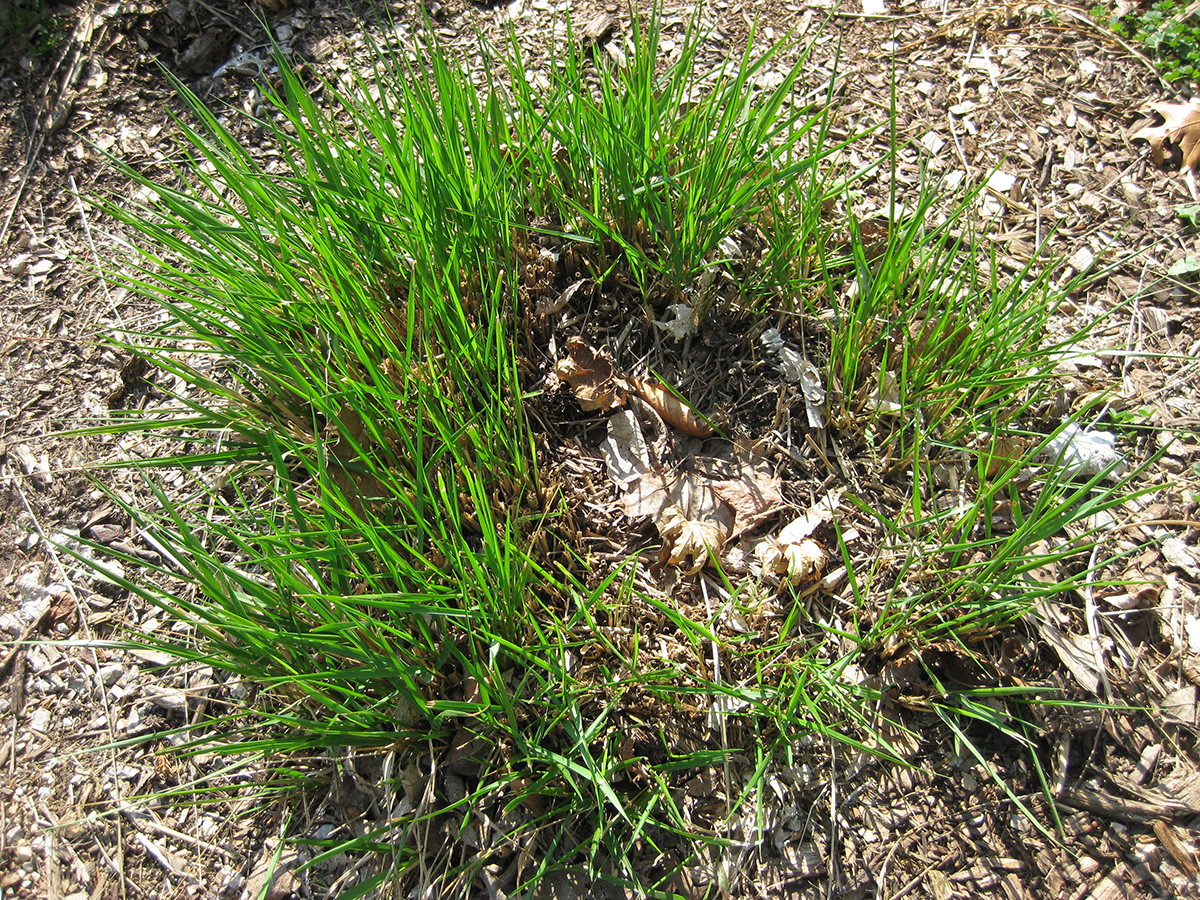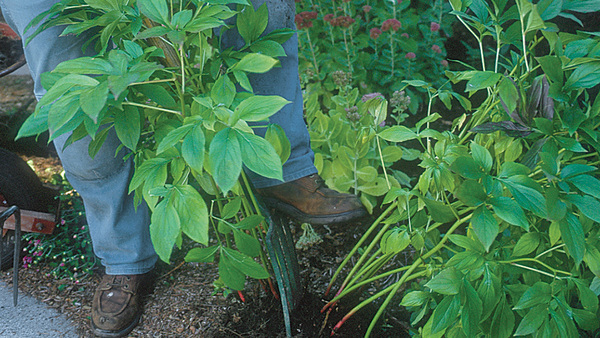
As we head into early spring weather and our perennial, ornamental grasses start to show new growth, this is the ideal time to divide these plants. Division of grasses, and most perennials, is done for the primary reason of keeping the original plant healthy, strong, and vibrant. Older grasses dedicate active growth to the outer perimeter of the plant while abandoning the less vigorous area at the original center. This creates a donut-like appearance, which indicates the need for attention to revitalize your grasses. (The “donut” appearance on any perennial is an indicator for needed division.) Dividing your grasses is also a great way to create more plants for the garden or to share with your friends and neighbors.
Perennial grasses, in our Midwest climate, are grouped roughly into two categories: cool season and warm season. Both can be divided when they show active growth. The cool-season grasses emerge earlier, while the warm-season grasses show growth after the soil has warmed later in spring. No grasses should be divided while actively flowering, and the ideal time is again in spring when new divisions will have time during the growing season to establish in their new locations. Cool-season grasses can be divided in fall, but the timing has to coincide with enough soil warmth for roots to firmly establish before the dormant season.

The first step in dividing grasses is to put on gloves (and wear them for the entire process), because grasses can be sharp! Next, cut back the old dormant growth of the grass all the way to the ground. This allows for a clean look at the grass, which has just started to show new growth. Excavating the entire plant by utilizing a sharp shovel and slicing a circle around the clump is the third step. Dividing grasses in the ground can be challenging, so total excavation to include roots is ideal. Dig and cut deep enough to get those roots, as these are vital for all your divisions. The root ball of the grass may come up in sections, which is acceptable, but the focus should be on the most vigorous, outer sections of the grass if the aforementioned “donut” is evident.
Using a sharp shovel, axe, hacksaw, knife, or other sharp implement, keep halving the excavated grass section(s) until you have 3-inch-wide clumps (minimally) with adequate roots attached. This is not easy with some of the larger warm-season grasses, so plan to use some elbow grease to accomplish this task. Consider getting some help for the largest of grass clumps, as excavation can be a substantial endeavor.
Plant the divisions immediately in the ground or in containers, as you do not want them to dry out. If you cannot plant them immediately, keep them wet and out of direct exposure to sun and wind. Replanted divisions should continue to be watered well until establishment, and soil and/or compost can be added to the original division site to rejuvenate and level that location. The benefits of dividing your grasses are worth the time and effort, so take advantage of the opportunity within that window of time in early to late spring.
—Mark Dwyer is the garden manager for the Edgerton Hospital Healing Garden in Edgerton, Wisconsin, and he operates Landscape Prescriptions by MD.


















Comments
Log in or create an account to post a comment.
Sign up Log in